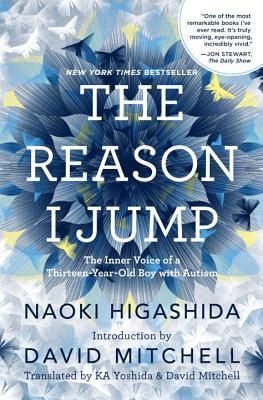Book review: Naoki Higashida’s “The Reason I Jump”
by Gui
I’m proud of myself. Last week I checked 14 tasks off my to-do list. This week, I have exactly 35 new tasks on my to-do list. Yes, you read that correctly. For every task I checked off my list, exactly 1.5 new tasks emerged in its place. I’m not sure how that happened. I’ll put it on my to-do list to figure it out.
I’m fairly certain that I am not alone in sometimes feeling overwhelmed by the lack of white space on my calendar or the abundance of (mostly self-induced) stress in my life. It is easy for me to get stuck on a seemingly infinite to-do list and forget that I check off the items on that list from my comfortable Easter Seals Headquarters office on the 24th floor of the Willis Tower on one of two monitors (or my iPad or iPhone). The point is it’s all about putting things into perspective.
 Every once in awhile I watch a documentary or read a book that reminds me that perspective is the key to keeping my sanity. The Reason I Jump: The Inner Voice of a Thirteen-Year-Old Boy with Autism, written by Naoki Higashida and translated by KA Yoshida and David Mitchell, was the latest reminder of how important perspective really is.
Every once in awhile I watch a documentary or read a book that reminds me that perspective is the key to keeping my sanity. The Reason I Jump: The Inner Voice of a Thirteen-Year-Old Boy with Autism, written by Naoki Higashida and translated by KA Yoshida and David Mitchell, was the latest reminder of how important perspective really is.
Naoki was diagnosed on the Autism spectrum. He is unable to express himself using speech. In fact, he lacks many of the control mechanisms in his brain that control his speech, sensory input and behavior — the same mechanisms many of us take for granted. However, with the help of his mother and an alphabet grid, Naoki learned to express himself through writing.
About that alphabet grid. I was confused by that term, but it is in fact what it is called in the book. In the book, David Mitchell (one of the translators) describes and defines the alphabet grid like this:
A Japanese alphabet grid is a table of the basic forty Japanese hiragana letters, and its English counterpart is a copy of the QWERTY keyboard, drawn onto a card and laminated. Naoki communicates by pointing to the letters on these grids to spell out whole words, which a helper at his side then transcribes.
Naoki can also write and blog directly onto a computer using its keyboard, but Mitchell says Naoki finds the lower-tech alphabet grid a “steadier handrail” because it offers fewer distractions and helps him focus.
In 176 short pages, Naoki opens a window into the mind and the life of a person diagnosed on the Autism spectrum in a deeply personal, sincere and revelatory way. I will never view a person diagnosed on the Autism spectrum (or any person living with a disability) the same again.
Naoki’s story provided a much needed reminder that I needed to put my life into perspective. If you are in need of the same, this book might be just what you are looking for.






